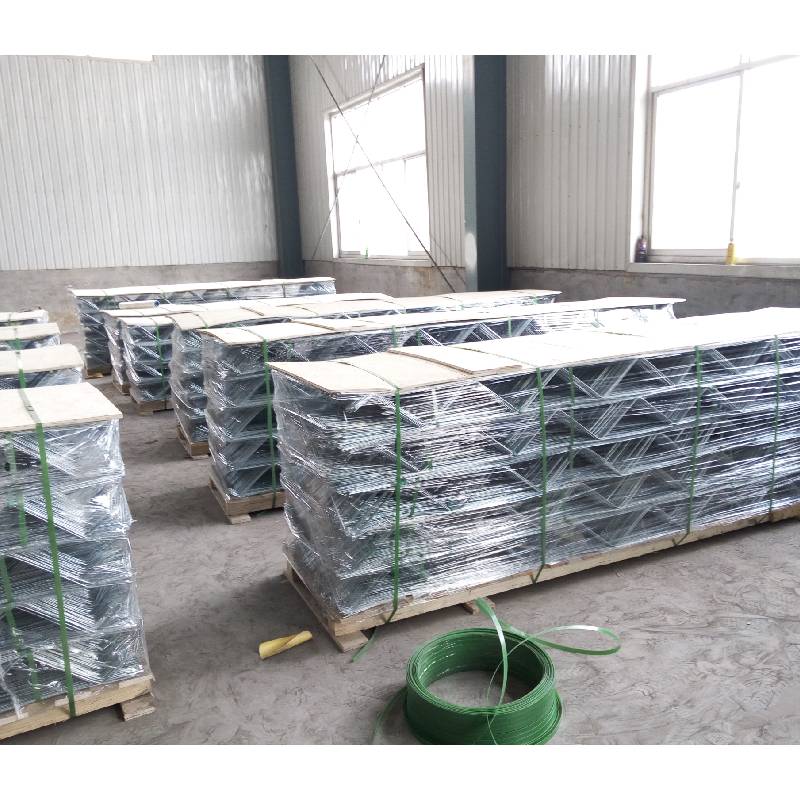
- Mobile Phone
- +8613931874955
- sales@cntcmetal.com
field fence cost per foot
Understanding Field Fence Cost Per Foot A Comprehensive Guide
When it comes to enclosing a field, whether for agricultural purposes, livestock management, or simply to delineate boundaries, understanding the costs associated with field fencing is crucial. One of the primary metrics for estimating these costs is the cost per foot of fencing material. This guide aims to break down the factors influencing these costs, types of fencing options available, and tips on making an informed decision.
Factors Influencing Cost Per Foot
1. Material Type The choice of material is perhaps the most significant factor affecting the cost per foot. Common materials for field fencing include - Barbed Wire Typically one of the most economical choices, ranging from $0.10 to $0.50 per foot. While effective for larger livestock, it may not be the best option for smaller animals. - Woven Wire Often used for livestock and smaller animals, woven wire can run from $0.50 to $2.00 per foot, depending on the gauge and quality. - Chain Link Durable and secure, chain link fences typically cost between $1.50 to $3.00 per foot, making it suitable for a variety of applications. - Vinyl Although more aesthetically pleasing, vinyl fences can range from $2.00 to $5.00 per foot, which may be a consideration if budget restraints are a concern.
2. Height and Design The height of the fence and its design will also affect the cost per foot. Taller fences require more material and possibly additional supports, leading to higher costs. Specialty designs, such as those meant for specific animals, may also increase expenses.
3. Installation Costs The cost of installation can vary significantly based on whether you plan to do it yourself or hire a professional. DIY installation may save labor costs but can lead to additional expenses if mistakes are made. Hiring professionals can add $1.00 to $3.00 per foot for labor, depending on regional rates and the complexity of the installation.
4. Terrain and Location The nature of the terrain where the fencing will be installed can influence costs as well. Rocky, uneven, or heavily wooded areas may require additional labor and equipment, which can increase installation costs dramatically.
5. Permits and Regulations Depending on your location, you may need to obtain permits for fencing. This can involve additional costs and should be factored into your overall budget. Local regulations regarding the height and type of fence you can install may also come into play.
Types of Field Fencing
Different types of fences serve various purposes and are influenced by the type of livestock or crops being protected. It’s essential to choose the right type of fence based on your specific needs.
field fence cost per foot

- Stock Fencing Ideal for larger animals like cows or horses, stock fencing typically features high tensile strength wire and can include barbed or plain wire. - Electric Fencing This type provides a significant deterrent for animals that might not be contained by traditional fencing. Installation costs can be higher due to the need for energizers and grounding systems, typically ranging from $1.00 to $3.00 per foot. - Boundary Fencing Often required by law, boundary fences mark property lines and reduce disputes with neighbors. Materials can vary significantly in cost, depending on local regulations.
Cost Management Tips
1. Plan Your Layout Efficient planning of your fencing layout can reduce material waste and labor costs. Consider straight lines and avoid unnecessary angles.
2. Bulk Purchasing If you need a large amount of fencing, consider purchasing in bulk to reduce material costs.
3. Regular Maintenance Investing in higher-quality materials may reduce long-term maintenance costs. Regular inspections and repairs can prolong the life of your fence.
4. Compare Quotes Always get multiple quotes from contractors if you’re not planning to DIY. This will help you find the best rates for installation.
5. Do-It-Yourself If you have the skill and tools, consider installing the fence yourself to save on labor costs, though ensure you are well-informed to avoid costly mistakes.
Conclusion
Understanding the cost per foot of field fencing is essential for budgeting and planning your fencing project. By considering material types, installation costs, and your specific needs, you can make informed decisions that suit your budget while ensuring effective protection for your field. Remember, thorough research and preparation are key to a successful fencing project that meets your requirements without breaking the bank.
share:
-
Why Sacrificial Formwork Is Redefining Underground ConstructionNewsJun.06,2025
-
The Structural Dynamics of Modern Concrete: How Snake Spacers Revolutionize Flexible ReinforcementNewsJun.06,2025
-
Snake Spacers Smart-Lock Concrete Reinforcement with Surgical PrecisionNewsJun.06,2025
-
Snake Spacers: Reinforcement Precision for Modern Concrete ProjectsNewsJun.06,2025
-
Snake Spacers Powering Concrete's Structural DNANewsJun.06,2025
-
Slither into Success: Snake Spacers' Precision Bite for Unbreakable ReinforcementNewsJun.06,2025
-
Sacrificial Formwork: Building Stronger, Faster, and Safer StructuresNewsJun.06,2025



















